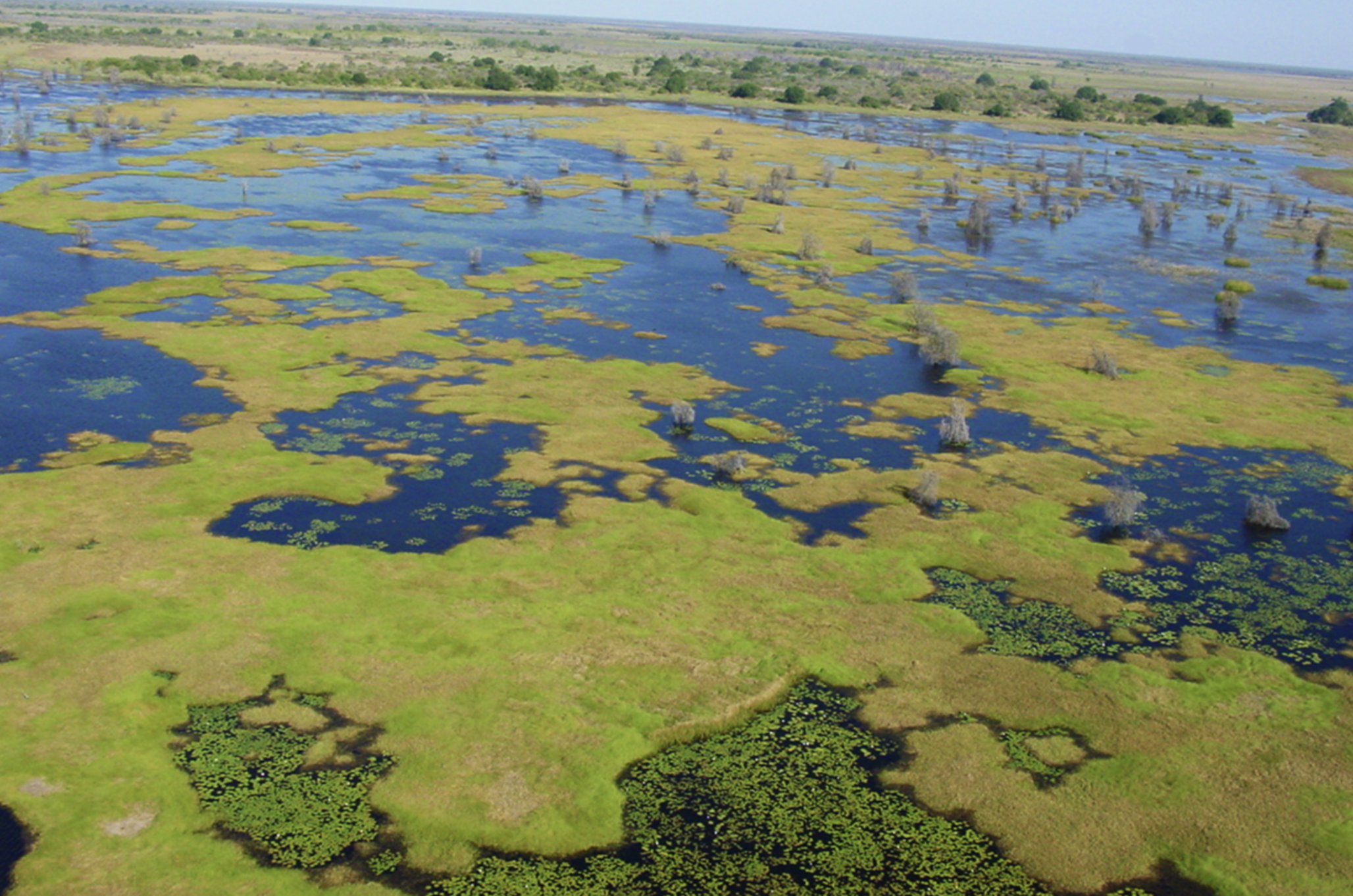Banhine Overview
Banhine National Park, locally known as “Parque Nacional de Banhine,” is a remote and ecologically significant protected area located in the Gaza Province of southern Mozambique. Covering approximately 7,250 square kilometers (2,799 square miles), it forms a vital part of the Limpopo River Basin and is an integral link in the Greater Limpopo Transfrontier Conservation Area. Established in 1973, Banhine National Park is renowned for its unique wetland system, semi-arid savanna, and seasonal pans, which create a haven for diverse flora and fauna.
The terrain of Banhine National Park is characterized by flat, sandy plains interspersed with low-lying wetlands, grasslands, and woodlands. The park is known for its seasonal pans—shallow depressions that fill with water during the rainy season, attracting a variety of wildlife. These pans are crucial for the park’s ecological balance, acting as vital water sources in an otherwise arid region. Vegetation includes drought-resistant species such as acacia, mopane, and various grasses, which support the park’s herbivorous species and provide shelter for smaller animals.
Wildlife in Banhine National Park is diverse and uniquely adapted to its semi-arid environment. The park is home to antelope species such as oribi, steenbok, and reedbuck, as well as larger herbivores like giraffes and zebras. Predators, including leopards, spotted hyenas, and jackals, roam the park’s vast landscapes. Banhine is also a haven for birdlife, with over 200 recorded species, including the rare wattled crane and flamingos that flock to the seasonal pans. The park’s wetlands and woodlands provide critical habitats for reptiles and amphibians, adding to its ecological importance.
Visitors to Banhine National Park can engage with its natural beauty through guided game drives and birdwatching excursions. Exploring the seasonal pans and surrounding grasslands offers opportunities to observe wildlife and experience the tranquility of the park’s remote setting. For more adventurous travelers, walking safaris provide a chance to immerse themselves in the park’s landscapes and learn about its unique ecosystems. Nearby communities offer cultural experiences, where visitors can gain insights into traditional practices and the importance of conservation in local livelihoods.
Despite its ecological significance, Banhine National Park faces challenges, including habitat degradation, human-wildlife conflict, and limited infrastructure for tourism. Conservation efforts led by Mozambique’s Administração Nacional das Áreas de Conservação (ANAC), in collaboration with international organizations, focus on restoring degraded areas, protecting wildlife corridors, and promoting sustainable tourism. Community-based initiatives aim to engage local populations in conservation, offering alternative livelihoods and fostering a sense of stewardship.
Banhine National Park is a hidden gem in Mozambique’s network of protected areas. Its seasonal wetlands, diverse wildlife, and cultural significance make it a destination of immense ecological and scientific value. By preserving Banhine, Mozambique contributes to the regional and global effort to safeguard biodiversity and ensure the sustainability of vital ecosystems.










































































